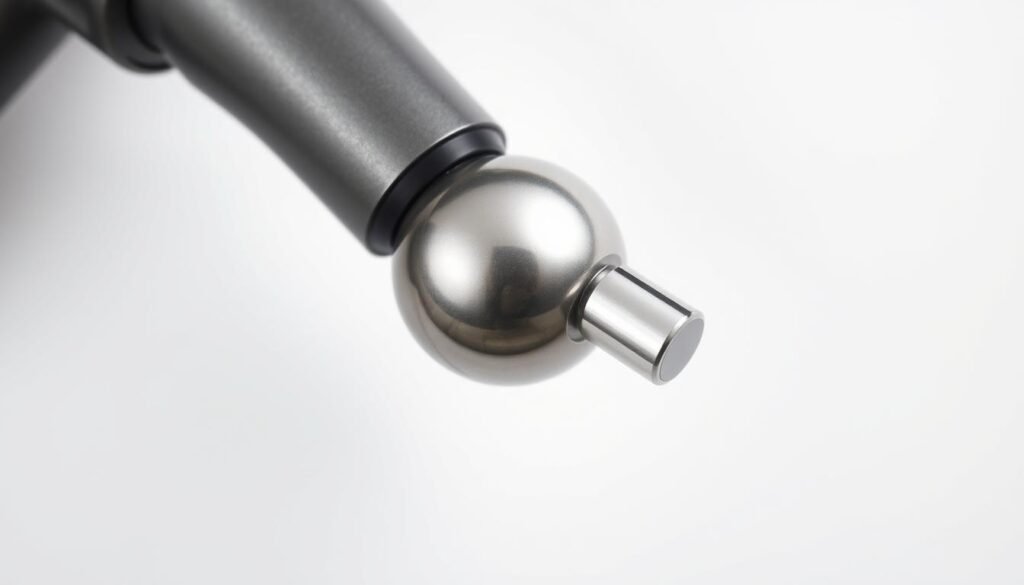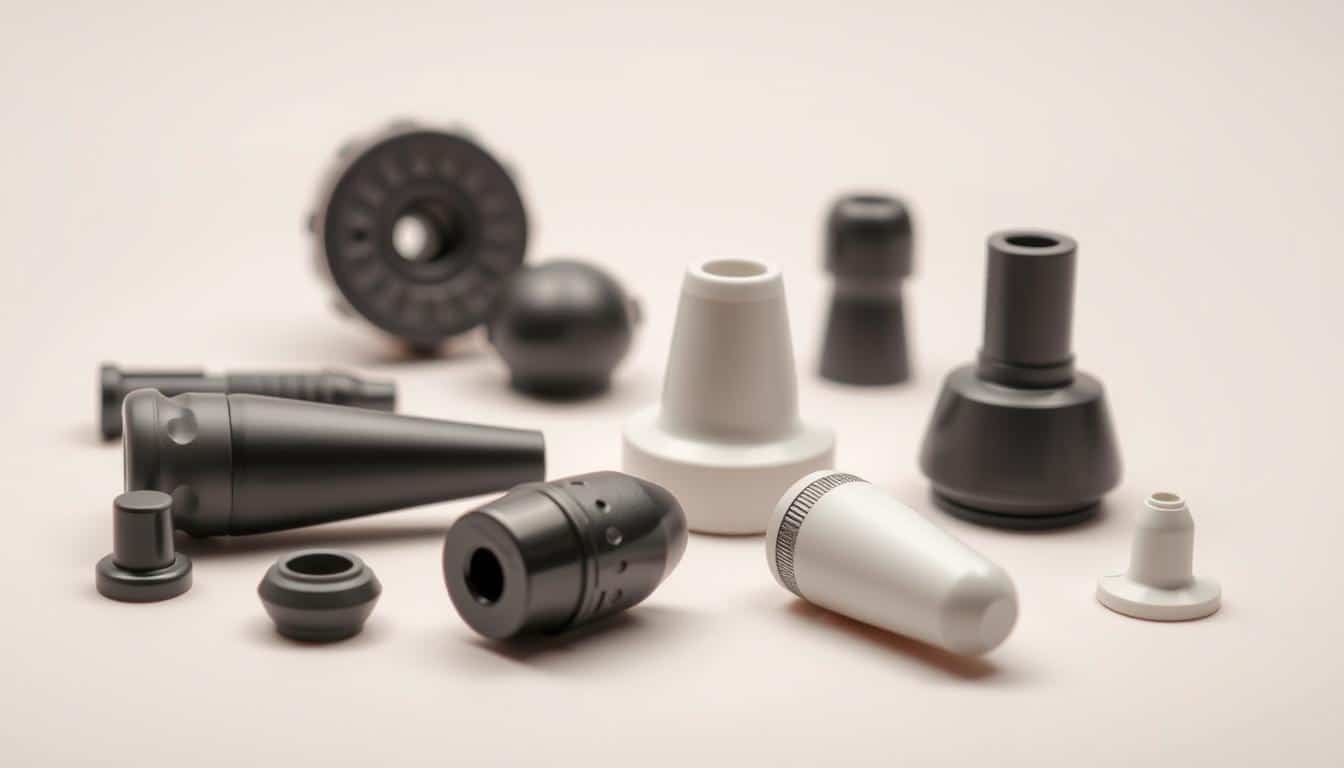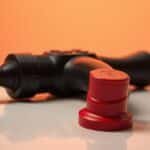Picture this: You just crushed a brutal leg day, and now your quads feel like they’ve been hijacked by a vengeous foam roller. You grab your trusty percussion tool, but staring at the array of attachments feels like deciphering hieroglyphics. Which one turns this muscle mutiny into zen-like calm?
That’s where we come in. Those plastic shapes aren’t just random doodads—they’re precision tools designed to tackle everything from knotty shoulders to cranky calves. The ball, fork, bullet, and flat attachments each have superpowers tailored to specific body parts. Think of them as your personal muscle whisperers.
We’ve done the homework so you don’t have to play attachment roulette. This guide will show you how to match shapes to sore spots, avoid accidental bruise art, and unlock next-level recovery. Spoiler: Your hamstrings and neck have very different opinions on what feels good.
Key Takeaways
- Different attachments target specific muscle groups for optimal relief.
- Choosing the right shape improves effectiveness and safety.
- Percussion tools offer customizable therapy for post-workout recovery.
- Proper technique prevents discomfort or injury during use.
- High-quality attachments enhance your device’s versatility.
Introduction: Unlocking the Power of Massage Gun Heads
Imagine holding a Swiss Army knife of muscle recovery – each attachment unlocks new possibilities. Those plastic shapes aren’t random trinkets but strategic tools that turn your device from blunt instrument to precision artist. We’ve all been there: staring at the assortment like it’s a final exam in “Attachmentology 101.”
Here’s the truth bomb: using the flat head on your trapezius is like bringing a spoon to a soup kitchen. Each shape speaks a different language to your body. The bullet whispers to tight trigger points, while the fork negotiates peace treaties with stubborn fascia. It’s less about brute force and more about strategic conversation.
“Think of attachments as translators between your device and your muscles – without the right one, you’re just making noise.”
Mastering these tools transforms your routine from guesswork to targeted therapy. Why does it matter? Pick wrong, and you’re either tickling the surface or auditioning for a bruise collection. Get it right, and suddenly your gadget becomes a muscle-whispering genius that knows calves crave circular pressure while shoulders beg for broad strokes.
We’re breaking down the secret handshake between attachments and anatomy. By the end, you’ll wield that percussive powerhouse like a maestro – because nobody wants to be that person using the spine attachment on their biceps.
Understanding Different Massage Gun Attachments

Ever felt like your recovery tool speaks in hieroglyphics? Those plastic shapes aren’t random—they’re specialized instruments designed for specific muscle conversations. Let’s decode their secret language.
Exploring Bullet and Fork Attachments
The bullet-shaped tool is the deep tissue specialist of your kit. With pressure concentrated in a nickel-sized area, it’s perfect for ironing out stubborn knots in shoulders or calves. Think of it as your personal knot negotiator.
Its spork-shaped cousin—the fork attachment—works like twin thumbs. Ideal for tracing along spine edges or Achilles tendons, it covers 30% more surface area while maintaining precision. Great for those “I need pressure but don’t bruise me” moments.
Discovering Ball, Round, and Padded Options
The sphere-shaped head is your versatility champion. Rotate it to shift between broad strokes and focused pressure—perfect for quads that need both sweeping glides and targeted attention.
| Attachment | Best For | Pressure Type |
|---|---|---|
| Bullet | Deep knots | Concentrated |
| Fork | Spinal muscles | Dual-point |
| Ball | Thighs/back | Adjustable |
| Round Flat | Glutes/chest | Even spread |
| Padded | Collarbone/shins | Cushioned |
Flat circular heads work like pizza dough rollers for large muscle groups—think glutes or pecs. The cushioned version? That’s your bone zone specialist, softening impacts on sensitive areas like elbows or knees without sacrificing effectiveness.
How to Evaluate Your Massage Gun for Optimal Therapy
Ever tried reading a nutrition label while grocery shopping? That’s what spec sheets feel like when choosing recovery tools. We’re cutting through the jargon to help you separate game-changers from gimmicks.
Key Features: PPM, Stroke Depth, and Battery Life
Percussions per minute (PPM) works like your car’s RPM gauge. Higher numbers (2400-3200) tackle deep knots, while lower ranges suit sensitive areas. But more isn’t always better – it’s about matching intensity to your pain tolerance.
Stroke depth determines whether you’re skimming the surface or reaching troubled tissues. Look for 10-16mm ranges – enough to penetrate thick muscle without feeling like a jackhammer. Pro tip: Longer strokes work magic on quads, shorter ones on wrists.
| Feature | Sweet Spot | Body Areas |
|---|---|---|
| PPM | 2400-3200 | Calves/Shoulders |
| Stroke Depth | 12-16mm | Glutes/Back |
| Battery Life | 3+ hours | Full-Body Use |
Battery life separates marathon runners from sprinters. A 3-hour runtime handles multiple sessions between charges. Watch for brands that count “standby time” – you want active-use metrics, not how long it gathers dust on your shelf.
Here’s the kicker: Balance these specs like a barista crafting your perfect latte. A 14mm stroke with 2800 PPM and 90-minute battery might beat flashier models. Because real therapy happens when numbers meet your unique biology.
Using Massage Gun Heads on Various Muscle Groups

Your body’s a roadmap of muscle groups – some need interstate highways, others require backroad navigation. The secret? Matching your recovery tool’s attachments like a GPS for soreness relief. Broad surfaces handle meaty areas, while precision tips navigate tight corners.
Targeting Large Muscle Areas for Deep Relief
Quads and glutes crave the ball attachment’s adaptable pressure. Rotate it during use – flat side for sweeping strokes, edge for stubborn knots. These areas respond best to slow, deliberate movements that mimic deep kneading.
For back muscles, glide the rounded edge along your latissimus dorsi like zipper teeth. The curved shape follows natural contours, reaching spots straight heads miss. Remember: pressure should feel like firm handshake, not vise grip.
Addressing Smaller Muscle Networks with Precision
Forearms and calves demand the bullet tip’s focused attention. Use quick pulses perpendicular to muscle fibers – think drumrolls on tight guitar strings. This approach breaks tension without overwhelming delicate tissues.
Transition between areas like a DJ blending tracks. Shift from ball to bullet attachment mid-session when moving from thighs to knees. Your body’s feedback matters – ease up if you feel sharp twinges, push deeper when encountering doughy resistance.
Deep Dive into the Bullet Attachment Benefits
Think of your recovery toolkit’s bullet-shaped attachment as a laser pointer for muscle tension. This concentrated powerhouse doesn’t mess around – it’s built to hunt down knots like a heat-seeking missile. With force density 3x higher than standard heads, it’s your go-to for deep tissue breakthroughs where broader tools tap out.
When to Deploy Your Precision Painkiller
Fire up this attachment when you encounter:
- Shoulder boulders that shrug off wider heads
- Forearm knots from gripping weights (or steering wheels)
- Plantar fascia that feels like walking on LEGO bricks
The secret? Its dime-sized contact area acts like hydraulic press meets acupuncture needle. Rotate between quick pulses and sustained pressure – your trigger points won’t know what hit them. Just avoid bony areas like your spine; this isn’t a “no pain, no gain” situation.
| Muscle Zone | Technique | Duration |
|---|---|---|
| Shoulders | Circular motions | 45 seconds |
| Calves | Vertical strokes | 30 seconds/side |
| Feet | Static pressure | 15 seconds/point |
Pro tip: Start at lower speeds to test sensitivity. If your face contorts like you’ve bitten a lemon, dial it back. Effective therapy shouldn’t require gritted teeth – just strategic pressure where it counts.
Fork Attachment: Broad Reach for Muscle Relief

Meet the multitasker of percussive therapy – the fork attachment works like dual thumbs for your aching muscles. This clever tool delivers focused pressure across two contact points, perfect for areas that demand both coverage and precision. Think of it as your personal muscle negotiator that brokers peace treaties between tension and relief.
Strategic Pressure Where It Counts
The fork’s genius lies in its split design. Those prongs straddle bony landmarks like your spine while hammering the flanking muscles. It’s like getting a deep tissue hug without the vertebrae crunch – essential for paraspinal muscles that guard your backbone like overzealous bouncers.
For larger zones like quads, glide the attachment vertically using both nodes. This dual-action approach covers 40% more area than single-point tools while maintaining therapeutic intensity. Our back therapy guide shows how to angle the prongs for optimal spinal relief.
| Attachment | Coverage | Best For |
|---|---|---|
| Fork | 2-3 inch span | Hamstrings, spinal muscles |
| Bullet | Dime-sized | Calves, trigger points |
Rotate between slow glides and static holds when tackling thighs. The fork’s broad reach lets you address multiple muscle strands simultaneously – like combing out tangled ropes. Pro tip: Angle the prongs diagonally across fibers for enhanced myofascial release.
This attachment shines where anatomy gets complicated. Use it along collar bones or shins to bypass sensitive areas while addressing surrounding tissues. It’s not just a tool – it’s your strategy for navigating the body’s obstacle course.
Ball Attachment: Precision and Versatility in Massage

Meet the chameleon of recovery tools – the spherical head that morphs from gentle soother to deep-tissue detective with a twist of your wrist. This unassuming orb holds more tricks than a magician’s hat, adapting to body contours like clay on a potter’s wheel.
Mastering the Angle Game
Tilt matters more than you think. Rotate the sphere 45 degrees to transform broad strokes into targeted pressure – perfect for navigating the wrist’s anatomical snuffbox (still not making that name up). The secret lies in surface contact:
| Angle | Pressure | Best For |
|---|---|---|
| Flat | Feather-light | Collarbones |
| 45° | Firm | Elbow Creases |
| Edge | Intense | Hip Flexors |
Hard rubber models act like determined thumbs, while foam versions mimic cloud-like palms. Swap materials based on your needs – tough love or gentle persuasion.
Pressure Playbook
Control intensity through three ninja moves:
- Roll across muscle fibers like dough under a baker’s pin
- Pulse perpendicular to knots like Morse code taps
- Hold pressure on trigger points like an elevator pause button
That curved surface becomes your secret weapon against awkward angles. Glide along ribcage edges or kneecap borders without bruising delicate areas. Remember: subtle wrist flicks outwork brute force every time.
Round Flat and Padded Heads: Even Pressure for Whole Body Therapy
Ever wondered how to soothe those tricky spots where bones peek through? The solution lies in two unsung heroes of recovery tools. Round flat attachments act like rolling pins for muscle dough, spreading force evenly across broad zones. Their padded cousins? Think shock-absorbing bumpers for skeletal hotspots.
Application on Sensitive Areas and Bony Spots
Glide the flat disc across quads or pecs—it’s your personal pizza dough roller for large muscle groups. The secret? Its surface area distributes intensity like sunlight through a magnifying glass, minus the burn.
When tackling shins or collarbones, switch to the cushioned version. This head plays nice with bony landmarks, delivering relief without the “ouch” factor. It’s like having a bodyguard that whispers sweet nothings to your joints.
Rotate between these tools based on your body’s terrain. Broad surfaces handle meaty regions, while padded edges navigate skeletal outposts. Remember: smart recovery isn’t about force—it’s about matching your hardware to your body’s unique architecture.












